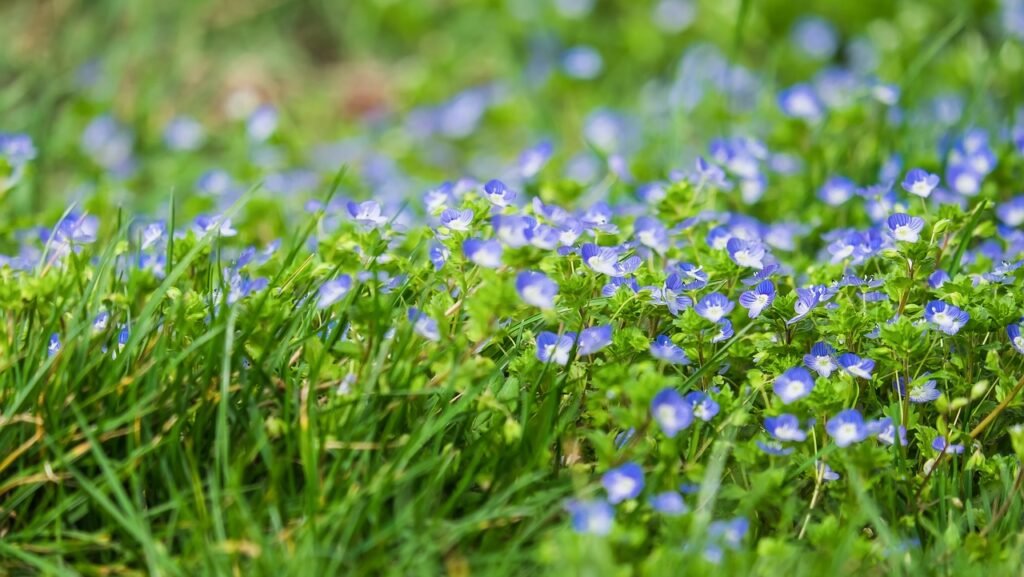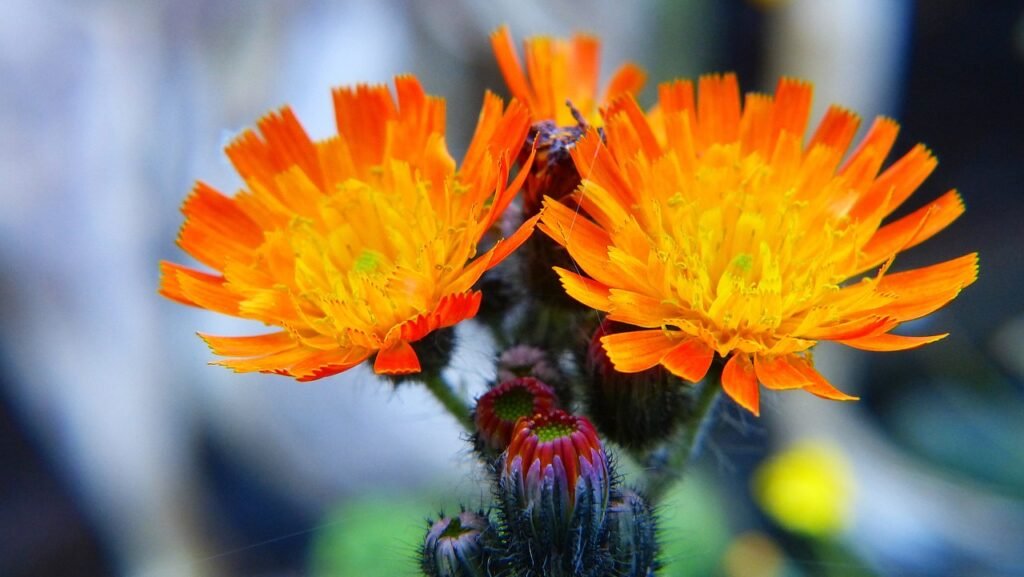
The Fascinating World of Wild Plants with Lavender Blooms
Lavender blooms are not only visually appealing but also possess a variety of intriguing characteristics. These wild plants, with their delicate purple petals, have caught the attention of nature enthusiasts and herbalists alike. Lavender, scientifically known as Lavandula, belongs to the mint family and is native to regions such as the Mediterranean and parts of Africa and Asia. With over 40 different species, lavender offers a captivating realm to explore within the world of wild plants.
One intriguing aspect of lavender blooms is their distinct fragrance. The flowers produce a strong yet soothing scent that is often used in aromatherapy, perfumes, and various beauty products. The smell of lavender is known to have calming effects and is frequently employed in relaxation techniques. Additionally, the scent of lavender has been found to improve sleep quality and reduce anxiety levels. This captivating fragrance, coupled with the plant’s enchanting purple flowers, makes lavender a favorite amongst gardeners and herbal enthusiasts around the world.
Identifying Common Garden Intruders with Purple Blossoms
Purple blossoms can create a mesmerizing sight in any garden, adding a touch of elegance and vibrancy. However, it’s important to distinguish between desirable plants and unwanted intruders. One common garden intruder with purple blossoms is the purple deadnettle (Lamium purpureum). This weed, characterized by its heart-shaped leaves and small, tubular purple flowers, can quickly spread and dominate garden beds. Despite its beauty, the purple deadnettle competes with cultivated plants for nutrients, sunlight, and water, making it a nuisance to gardeners. Another purple-flowering intruder is the purple loosestrife (Lythrum salicaria). This tall, perennial plant produces spikes of bright purple flowers and can be found growing near water bodies or in poorly drained soils. Purple loosestrife poses a significant threat to wetland ecosystems, outcompeting native plants and affecting their habitat.
When it comes to identifying common garden intruders with purple blossoms, another troublesome weed to watch out for is henbit (Lamium amplexicaule). With its square stems and clusters of purple flowers, henbit can carpet lawns and garden beds in no time. This weed thrives in cool-season conditions and is often a nuisance during early spring. Alongside henbit, gardeners also need to be wary of the purple-flowering vetch (Vicia spp.). This climbing weed produces gorgeous purple flowers and is known for its ability to fix nitrogen in the soil. While beneficial in some cases, vetch can quickly become invasive, smothering other plants and reducing biodiversity in the garden.
An Overview of Wildflowers Sporting Vibrant Purple Petals
Wildflowers with vibrant purple petals are a stunning sight to behold in any natural landscape. These captivating blooms add a pop of color and beauty to meadows, forests, and gardens alike. From delicate lavender hues to deep, royal purples, these wildflowers come in a variety of shades that are sure to capture your attention.
One notable species of purple wildflower is the purple coneflower (Echinacea purpurea). Known for its spiky petals and prominent center cone, this wildflower is not only visually captivating but also has a rich history of medicinal use. It is believed to possess immune-boosting properties and is often used in herbal remedies. Additionally, the purple coneflower attracts a range of pollinators, making it a welcome addition to gardens seeking to support local ecosystems.
Another prominent purple wildflower is the Russian sage (Perovskia atriplicifolia), which boasts elegant spikes of tiny, lavender-colored blossoms. This perennial plant not only adds a touch of ethereal beauty to gardens but is also highly drought-tolerant and deer-resistant. In addition, Russian sage emits a calming fragrance that fills the surrounding air, making it a popular choice for landscaping.
Whether adorning a meadow or a garden, wildflowers with vibrant purple petals are a testament to the beauty and diversity of the natural world. From their elegant forms to their ecological significance, these wildflowers provide a captivating display that is sure to enchant all who encounter them.
The Surprising Benefits of Purple-Flowering Weeds in Nature
Purple-flowering weeds are often seen as nuisances in gardens and landscapes, but they actually play a vital role in nature. These uninvited guests serve as important food sources for pollinators such as bees, butterflies, and hummingbirds. Their vibrant purple blooms act as beacons, attracting these creatures and providing them with nectar and pollen. In turn, the pollinators help to fertilize other plants, contributing to the overall health and biodiversity of ecosystems. So, while purple-flowering weeds may not be welcome in cultivated spaces, they are essential for the balance and survival of many species in the wild.
Another surprising benefit of purple-flowering weeds lies in their ability to stabilize soil and prevent erosion. These resilient plants have deep root systems that penetrate the earth, holding it together and preventing the loss of valuable topsoil. This is particularly important in areas where the natural vegetation has been disturbed or removed, such as construction sites or recently cleared land. Purple-flowering weeds act as guardians of the soil, helping to maintain its structure and fertility. Thus, their presence in nature serves as a natural defense against the harmful effects of erosion, preserving the health of the surrounding environment.
How to Distinguish Between Different Types of Purple-Flowering Weeds
When it comes to distinguishing between different types of purple-flowering weeds, it is essential to understand the key characteristics that set them apart. One important feature to observe is the shape and arrangement of the leaves. Some purple-flowering weeds have large, broad leaves, while others have fine, feathery foliage. Additionally, examining the stem structure can provide valuable clues. Some weeds have sturdy, upright stems, while others may have thin, trailing vines.
Another factor to consider is the size and shape of the flowers themselves. While all purple-flowering weeds share a common color, the shape and size of the blossoms can vary significantly. Some weeds produce small, delicate flowers arranged in clusters, while others may have larger, solitary blooms. Paying attention to these distinctive floral attributes can help in identifying specific weed species.
To successfully distinguish between different types of purple-flowering weeds, it is recommended to consult botanical guides or seek advice from professionals. These resources often provide detailed descriptions and images that can aid in accurate identification. Additionally, taking note of the growth habits and preferred habitats of the weeds can also be informative. Some species thrive in moist soil, while others prefer drier conditions. By combining these various indicators, gardeners can develop a discerning eye for identifying and managing different types of purple-flowering weeds in their gardens.
The Role of Purple-Flowering Weeds in Pollinator Conservation
Pollinators play a crucial role in the ecosystem, aiding in the reproduction of plants through the transfer of pollen. However, with the decline in natural habitats and the use of pesticides, their populations have been steadily decreasing. This is where the role of purple-flowering weeds comes into play. These seemingly unwanted plants actually provide a vital source of food for pollinators, offering nectar and pollen when other food sources are scarce. Purple-flowering weeds act as an important lifeline, supporting the survival and health of bees, butterflies, and other pollinating insects.
Managing and Controlling Purple-Flowering Weeds in Your Garden
Purple-flowering weeds can quickly take over a garden if left unmanaged. To effectively control these unsightly intruders, it is crucial to implement a proactive approach. Regular weeding is one of the most effective strategies in managing purple-flowering weeds. By pulling them from the root, you not only remove the visible parts but also prevent them from regrowing. It is important to be consistent with this task and tackle any emerging weeds before they have a chance to spread seeds. Additionally, using a thick layer of mulch can help to suppress weed growth by blocking sunlight and depriving them of the necessary resources to thrive. Keep in mind that mulch should be applied at a depth of at least 2-3 inches for optimal results.
The Cultural Significance of Weeds with Purple Flowers in Various Regions
In various regions around the world, weeds with purple flowers hold cultural significance and play an important role in different traditions and beliefs. These vibrant blooms not only add beauty to the landscape but also have deep-rooted meanings that have been passed down through generations. In some cultures, purple-flowering weeds are seen as symbols of spirituality and mysticism, representing the connection between the earthly and the divine. They are often used in rituals and ceremonies to invoke positive energy and bring about healing and purification. The captivating allure of these purple flowers transcends borders and continues to captivate people from all walks of life.
Beyond their spiritual significance, weeds with purple flowers also have cultural importance in the realm of literature and art. Poets and artists throughout history have drawn inspiration from the enchanting beauty of these blooms, using them as metaphors for various emotions and themes. The presence of purple-flowering weeds in paintings and written works often conveys a sense of mystery, romance, and nostalgia. Their striking hues and delicate petals are thought to evoke emotions and sentiments that words alone cannot express. From ancient mythology to modern-day masterpieces, the cultural impact of weeds with purple flowers is undeniable.
Discovering the Medicinal Properties of Purple-Flowering Weed Species
Purple-flowering weed species have long been regarded as nuisances in gardens and landscapes. However, recent research has shed light on the surprising medicinal properties of these often-overlooked plants. From common garden intruders like purple deadnettle (Lamium purpureum) to more resilient weeds like purple loosestrife (Lythrum salicaria), these purple-flowering plants have shown great potential in traditional medicine.
One example is the purple coneflower (Echinacea purpurea), which has been used for centuries by Native Americans as a remedy for various ailments. Studies have shown that this herb possesses immune-stimulating properties, making it an effective natural treatment for colds and flu. Another purple-flowering weed, known as self-heal (Prunella vulgaris), has traditionally been used in Asia and Europe to alleviate inflammation and promote wound healing. Its medicinal properties have caught the attention of researchers, who are now exploring its potential as a treatment for conditions such as eczema and psoriasis.
Creative Ways to Incorporate Weeds with Purple Flowers into Your Landscape
Soft, delicate, and vibrant, purple-flowering weeds have a unique charm that can add a touch of natural beauty to your landscape. While they may be considered unwanted intruders by some, these weeds can actually be creatively incorporated into your outdoor space, transforming them from nuisances to stunning focal points. One creative way to showcase their beauty is by creating a wildflower meadow, where these purple-flowering weeds can mingle with other native plants. This can create a visually striking and ecologically beneficial landscape that supports pollinators and attracts birds and butterflies.
Another creative idea is to use the purple-flowering weeds as a backdrop for a whimsical garden art or sculpture installation. Place colorful, eye-catching sculptures amidst the wild weeds to create a contrast that will draw attention and create a captivating visual display. This can add an element of playfulness and intrigue to your landscape, turning what was once seen as a nuisance into a delightful artistic expression. So, instead of trying to eliminate these purple-flowering weeds from your garden completely, consider finding creative ways to incorporate their beauty into your landscape and embrace their presence.

